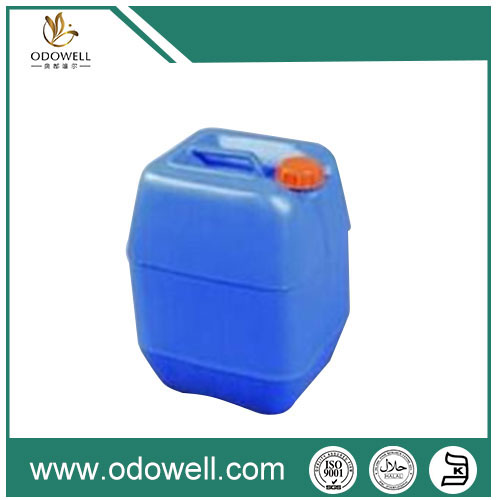What Are Aroma Chemicals and How Do They Influence the Scents We Experience?
2024-12-12
Aroma chemicals play a vital role in the fragrances we encounter daily—whether it's in perfumes, candles, cleaning products, or even the foods we eat. These chemicals, also known as fragrance compounds, are responsible for creating the distinct smells that can evoke emotions, memories, and even influence our moods. But what exactly are aroma chemicals, and how do they shape our sensory experiences?
In this blog, we’ll dive into the world of aroma chemicals, exploring what they are, how they work, and why they are so crucial in both the fragrance and food industries.
What Are Aroma Chemicals?
Aroma chemicals are organic compounds used to produce specific smells in various products. They can be naturally derived from plants, flowers, fruits, and even animals, or synthetically created in laboratories. These chemicals are designed to mimic or enhance the scents found in nature, making them essential in perfumes, air fresheners, candles, and even in the food and beverage industry.
Aroma chemicals are often used in combination to create complex fragrances. They are typically classified into different categories based on the type of scent they produce, such as floral, citrus, spicy, woody, or musky.
How Do Aroma Chemicals Work?
When you smell something, molecules from the substance enter your nose and interact with olfactory receptors in your nasal passages. These receptors send signals to your brain, which processes the information and identifies the specific scent. Aroma chemicals work by releasing molecules that are perceived by these receptors, triggering a response that results in the perception of a particular scent.
Some aroma chemicals are more volatile than others, meaning they evaporate into the air more quickly, while others may linger longer. This volatility plays a key role in how a fragrance unfolds over time, with top, middle, and base notes coming into play in the world of perfumery.
Types of Aroma Chemicals
1. Natural Aroma Chemicals
Natural aroma chemicals are derived from natural sources, including flowers, herbs, fruits, spices, and even animal by-products. For example:
- Linalool is a floral-scented compound found in lavender and coriander.
- Citrus limonene provides the fresh, zesty scent of lemons and oranges.
- Vanillin gives vanilla its distinctive sweet fragrance and is often extracted from vanilla beans.
While these natural aromas are beloved for their authenticity, they can sometimes be expensive and difficult to obtain in large quantities, leading to the rise of synthetic alternatives.
2. Synthetic Aroma Chemicals
Synthetic aroma chemicals are man-made in laboratories to replicate or enhance the scents found in nature. These compounds are typically less expensive and more readily available than their natural counterparts, and they can be designed to last longer or produce specific desired effects. For example:
- Ethyl vanillin is a synthetic compound with a stronger vanilla aroma than its natural counterpart.
- Isoamyl acetate, often referred to as "banana oil," mimics the sweet, fruity scent of bananas.
- Hedione, a synthetic jasmine-like scent, is frequently used in perfumes to create a fresh, airy feeling.
Synthetic aroma chemicals have revolutionized the fragrance industry, allowing for the mass production of complex and long-lasting scents that would be difficult or expensive to obtain naturally.
Aroma Chemicals in Perfume and Fragrance Products
In the world of perfumery, aroma chemicals are the building blocks of fragrance creation. Perfumers use a combination of natural and synthetic aroma chemicals to craft complex scents that are appealing, memorable, and long-lasting. The art of blending these chemicals is a delicate process, as the right balance of top, middle, and base notes must be achieved for a fragrance to be harmonious.
- Top Notes: These are the first scents you smell when you apply a fragrance, and they tend to be light, fresh, and volatile. Common top notes include citrus aromas like lemon or bergamot.
- Middle Notes (Heart Notes): These notes emerge after the top notes evaporate and are considered the "heart" of the fragrance. Floral scents like rose, jasmine, and lavender are typical heart notes.
- Base Notes: These notes are the foundation of a fragrance, providing depth and longevity. Woody, musky, and vanilla notes are often used as base notes.
By carefully selecting and blending aroma chemicals, perfumers create scents that evoke specific emotions and memories, from fresh and energizing to warm and comforting.
Aroma Chemicals in Food and Beverages
Aroma chemicals are not just for perfumes—they also play a significant role in the food and beverage industry. The flavor of food is not just about taste; much of what we perceive as flavor comes from our sense of smell. When you eat or drink something, the aroma chemicals released from the food interact with your olfactory receptors, which contribute to your overall experience of the flavor.
For example:
- Estragole is a chemical found in basil and tarragon that imparts a distinct herbaceous aroma, enhancing the flavor of dishes.
- Butyric acid adds a buttery, creamy smell to foods like cheese and butter.
- Cinnamaldehyde gives cinnamon its characteristic spicy-sweet fragrance.
In many cases, synthetic aroma chemicals are used to replicate natural flavors in processed foods or beverages, allowing for consistent tastes in mass-produced products. These synthetic compounds help make products more affordable and more accessible to consumers worldwide.
Aroma Chemicals in Household Products
Aroma chemicals are also widely used in household products like air fresheners, cleaning agents, candles, and detergents. These products rely on aroma chemicals to create scents that evoke cleanliness, freshness, or relaxation. For example:
- Linalool and limonene are commonly used in cleaning products for their fresh, citrusy aroma.
- Vanillin is frequently added to candles to create a warm, comforting smell.
- Eugenol, found in cloves, is used in air fresheners to provide a spicy, soothing fragrance.
The use of aroma chemicals in these products allows for the creation of signature scents that consumers associate with specific brands or experiences.
Are Aroma Chemicals Safe?
The safety of aroma chemicals has been extensively studied by regulatory bodies like the U.S. Food and Drug Administration (FDA) and the European Food Safety Authority (EFSA). Generally, aroma chemicals are considered safe when used in accordance with established guidelines. However, some individuals may experience allergic reactions or sensitivities to certain chemicals, particularly synthetic fragrances.
While most aroma chemicals are safe, it's important to be aware of potential allergens or irritants in personal care products or household items, especially if you have sensitive skin or respiratory issues.
Conclusion: The Importance of Aroma Chemicals
Aroma chemicals are crucial in shaping the scents that influence our daily lives. Whether in perfumes, food, or household products, these compounds add depth, complexity, and enjoyment to the sensory experiences we encounter. From the zesty fragrance of citrus to the comforting aroma of vanilla, aroma chemicals play an essential role in how we perceive the world around us.
The use of aroma chemicals continues to evolve, with advances in both natural extraction methods and synthetic production offering endless possibilities for innovation. As consumers, being mindful of the ingredients in the products we use can help us make more informed choices, while still enjoying the fragrant experiences that these remarkable chemicals provide.



